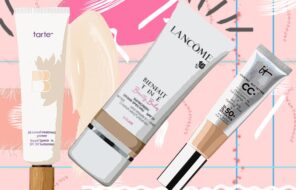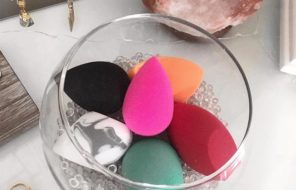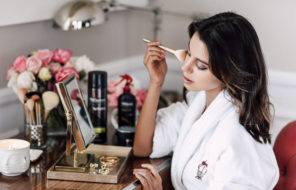If a natural makeup look with a soft matte finish is what you are looking for, mineral makeup is your best bet. In this article, we’ll get you started with all the details so you can incorporate powder foundations into your routine. We’ll explain what mineral foundations are, who they work best for, and how they differ from other powder products. We’ll show how to apply powder foundation, so you can get that quick yet flawless base.
In this article:
- What Is Powder Foundation?
- Who Is Mineral Foundation Best for?
- What Is the Difference Between Powder Foundation and Other Face Powders?
- Powder Foundation Pros & Cons
- How to Apply Powder Foundation
- Powder Foundation Tips & Tricks
What Is Powder Foundation?
Powder foundation, also known as mineral foundation or mineral makeup, is a face powder with a lot of pigment. This powder acts as a makeup product, giving the skin an even tone and helping to hide imperfections.
Like other face powders, powder or mineral foundations usually give the skin a matte finish, and they tend to work best for makeup minimalists and for those with oily skin. Powder foundations usually have very short ingredients lists comprised mostly of mineral powders like mica, titanium dioxide, and zinc oxide.
Who Is Mineral Foundation Best for?
Powder foundation works best for those with normal, combination, and oily skin. They don’t work as well for those with dry skin or flakey patches.
It gives long-lasting coverage without clogging the pores, and it ensures a matte finish to the skin. It is a great alternative for those who don’t like to wear too many layers of products, whether it’s due to discomfort with cream or liquid foundations or simply out of the desire for a quick and simple beauty routine.
Powder foundations are somewhat easier to apply and blend when compared to cream and liquid foundations, so they’re also a good choice for beginners.
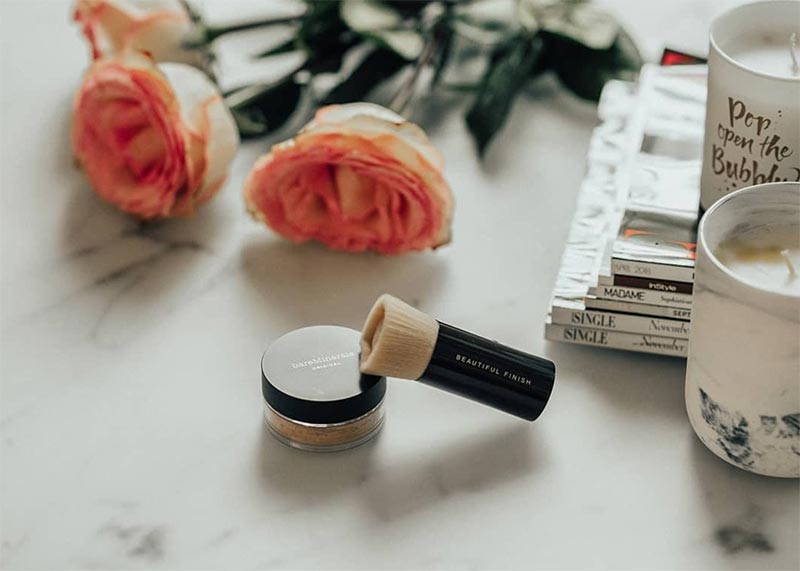
What Is the Difference Between Powder Foundation and Other Face Powders?
Whereas the purpose of powder foundation is to perfect the color of the skin and hide imperfections, most makeup powders will simply mattify the skin without improving its coloring. Some face powders do have a little bit of color, but they don’t provide nearly the same amount of coverage as foundation powders do.
Some face powders are setting powders that are supposed to go on top of cream and liquid foundations in order to set them in place and prevent them from smudging or fading throughout the day.
Finishing powders and HD powders act sort of like primers (only at the end of the makeup routine), to blur the look of pores and wrinkles with the help of reflective mineral ingredients. Some foundation powders can do the same thing, in addition to evening the tone of the skin.
Powder Foundation Pros & Cons
You need to know all the pros and cons of mineral foundation powders in order to figure out whether this is the product you need in your makeup kit.
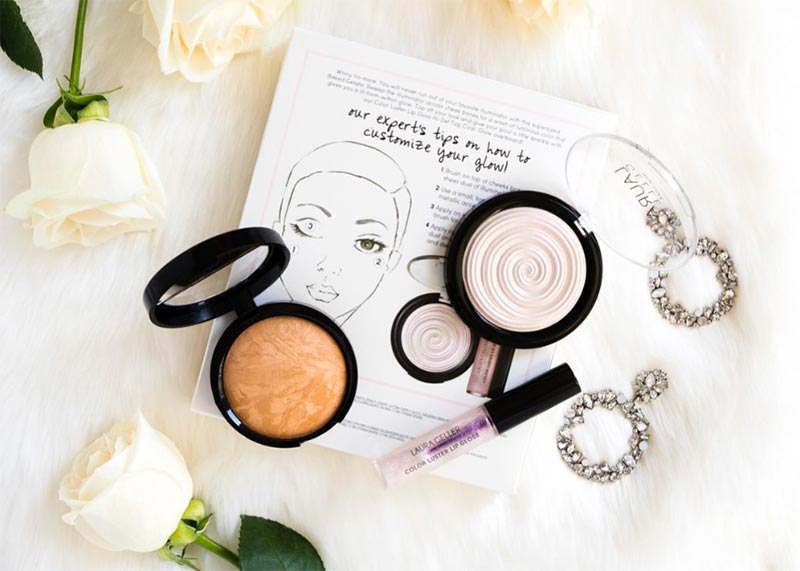
Pros
- Powder foundations provide the skin with long-lasting, matte coverage.
- Since mineral makeup has a shorter list of ingredients, it is less likely to irritate the skin or cause breakouts.
- Mineral foundations are quick and easy to apply, which makes them a great choice for those who are new to wearing makeup.
- Since powder foundations can go over bare skin, they are a great choice for makeup minimalists who don’t like to spend too much time on their makeup or to own too many products.
- Pressed powder foundations are great for touch-ups on the go, since they’re easy to carry and apply without making a mess.
Cons
- The medium coverage that foundation powders provide isn’t always enough for everyone.
- Mineral foundations can make the makeup look appear cakey and unnatural if over-applied.
- Powder foundations do not play nicely with dry skin – they bring out and emphasize dry patches and areas of flakiness.
- They tend to not work too well with the recently popular dewy or strobed makeup looks, although some mineral foundations with a glowy finish do exist.
How to Apply Powder Foundation
- Begin by making sure your skin is prepped and well moisturized. Cleanse it with a gentle cleanser or micellar water, and apply a nourishing moisturizer.
- If necessary, apply a primer to your skin – this can give the powder foundation something to stick to, and will also help boost its coverage a bit by smoothing out the pores and blurring imperfections.
- If you feel like you have some discoloration in your skin that needs correction, feel free to spot apply concealer to the necessary areas in a thin layer. Common areas that’ll need additional coverage include the under eye area, around the nostrils, or areas where the skin is red or broken out.
- Now you’re ready for powder foundation! Start by dipping a firm, medium-sized powder brush into your mineral foundation powder of choice. Make sure to tap off the excess product back into the lid.
- Apply the foundation powder to your skin in circular, buffing motions. Start at the center of your face and work your way outwards. Make sure not to miss the line of your jaw, where people often stop their foundation application, ending up with a visible, unblended line.
- You can use a smaller brush to apply powder foundation to the smaller parts of the face, like around the nose and below the eyes. If you’ve applied concealer on any of those areas, apply the mineral foundation in a tapping motion instead of a buffing one.
- Give your skin a good look, and make sure there are no heavy parts of unblended corners. If there are, use a clean brush to blend the foundation further and to remove excess product from the skin.
- Once your skin looks flawless, you can finish off your look. Apply eye makeup, powder contour & highlight, blush, and your lip color of choice.
- For more longevity, spray your skin with a makeup setting spray. If you feel like your skin is looking a little dry, use a hydrating spray instead.
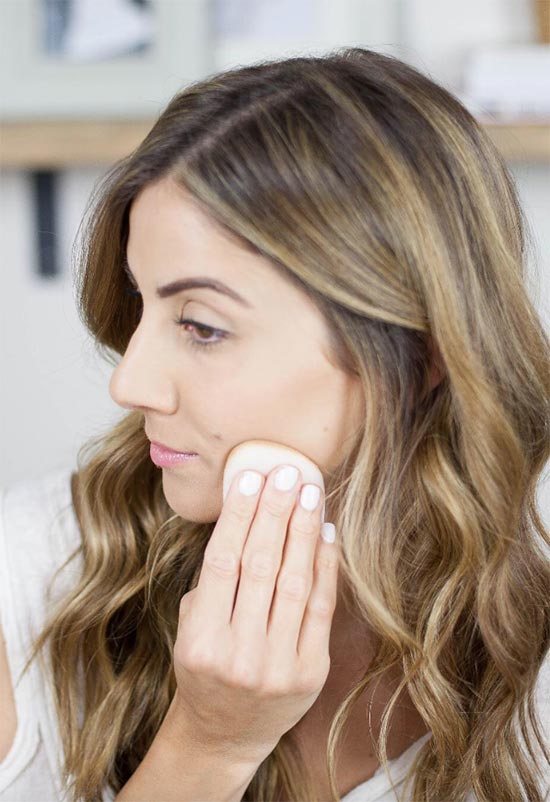
Powder Foundation Tips & Tricks
- Always make sure your skin is as hydrated as possible before applying powder foundation. You can achieve maximum hydration by layering a hydrating toner, serum, and then moisturizer to your skin.
- Powder foundation that is a few shades darker than your skin can make for an excellent contour shade. A few shades lighter can work beautifully as a matte highlighter.
- For ulta-full coverage, use powder foundations on top of your typical liquid or cream foundation, instead of a setting powder.
- You can use powder foundations to adjust the color of foundations that are a little too dark or too light for your skin tone. For example, if you’ve purchased a foundation that fit your skin in winter but is too pale with your summer tan, simply go for a foundation powder that is just a touch darker than your skin. Use it to set your foundation and adjust its color. The same thing works in reverse as long as the foundation isn’t extremely dark.
Photos via @bymaleiah, Instagram


